HYBRID EVENT: You can participate in person at Barcelona, Spain from your home or work.
Blood Infectious Diseases
Blood Infectious Diseases
Microorganisms such as viruses or bacteria that are carried in the bloodstream and can cause disease in humans are known as bloodborne infections. Malaria, syphilis, and brucellosis are among the many bloodborne diseases, as are Hepatitis B (HBV), Hepatitis C (HCV), and the Human Immunodeficiency Virus (HIV). HBV and HIV are bloodborne diseases that can be transmitted by coming into touch with infected human blood or other potentially infectious body fluids. These pathogens can spread from one person to another through a variety of means, including blood transfusions, sexual contact, open wounds, mucous membranes, and more. Health-care professionals are at risk of contracting blood-borne infections (HCWs).
- Blood Disorders
- Contamination of Blood Products
- Sepsis
- Infections affecting White Blood Cells
- Blood Transfusion
Committee Members

Francis J Castellino
University of Notre Dame, United States
Ranjan Ramasamy
ID-FISH Technology, United States
Saurabh Chattopadhyay
University of Kentucky College of Medicine, United States Infection 2026 Speakers

Rico Leonardo Lizbinski
Northern Light Health, United States
Sasha Leibholz
New York Presbyterian Columbia/Cornell, United States
Lauren Gruffi
New York Presbyterian Columbia/Cornell, United States



Title : Pathogen-derived noncanonical epitopes: Are they valuable targets for novel vaccinations and shall we be concerned about autoimmune responses?
Michele Mishto, Francis Crick Institute, United Kingdom
Title : Bioterrorism through the ages: Historical perspective, emerging threats, and medical countermeasures
Claudia Ferreira, Sorbonne University, France
Title : Changing population immunity to COVID-19 in the context of infection, vaccination, and emerging SARS-CoV-2 variants
Ranjan Ramasamy, ID-FISH Technology, United States
Title : Extensively drug-resistant bacterial infections: Confronting a global crisis with urgent solutions in prevention, surveillance, and treatment
Yazdan Mirzanejad, University of British Columbia, Canada
Title : Measles vaccination coverage indicators in 2023 and advance towards measles elimination and eradication by 2030
Pedro Plans Rubio, College of Physicians of Barcelona, Spain
Title : Severe influenza and other related respiratory infection cases during Omicron era in Japan
Masafumi Seki, Saitama Medical University International Medical Center, Japan